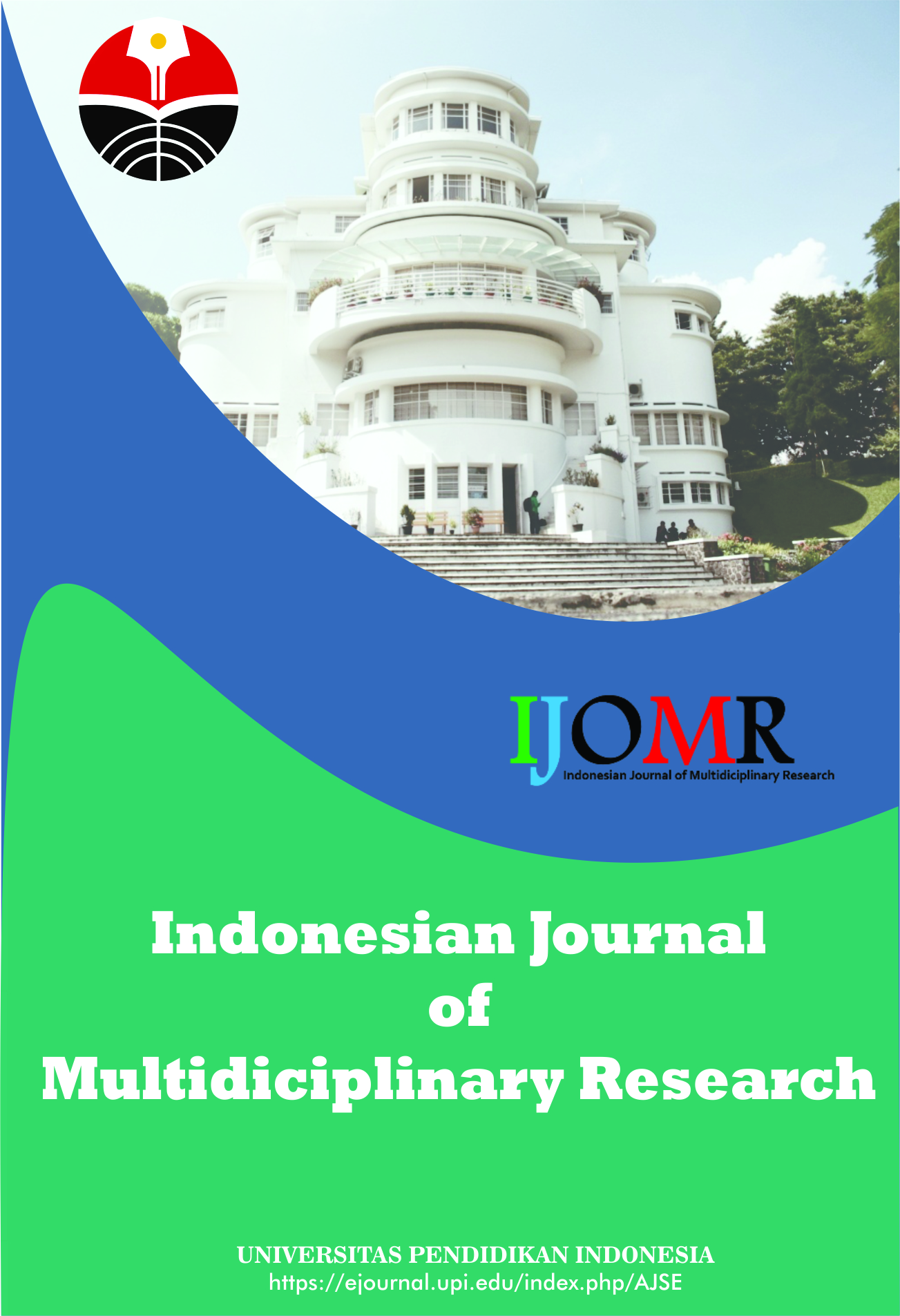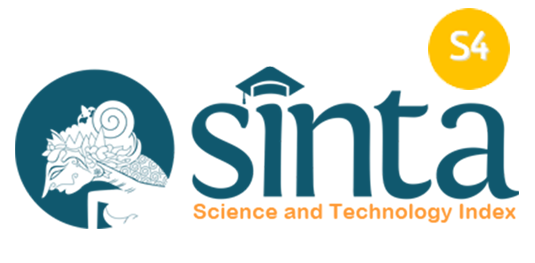Promoting Competitive Intelligence Strategies to Advance Library Services to Rural Dwellers
Abstract
Keywords
Full Text:
PDFReferences
Abulude, F.O., Ademilua, S.O., and Gbotoso, A.O. (2024). Noise pollution in libraries: Impacts, strategies, and recommendations. Indonesian Journal of Multidiciplinary Research, 4(1), 127-144.
Adegbite, B.T. (2020). Competitive intelligence and users patronage promotion in polytechnic libraries: A review. Journal of Women in Technical Education and Employment (JOWITED), 1(1), 206-216.
Ademilua, O.S., Gbotoso, A.O., and Abulude, F.O. (2024). Promoting community learning strategies to promote library services to rural dwellers in Nigeria. ASEAN Journal of Community Service and Education, 3(2), 95-110.
Adesina, O.F., Ambali, Z.O., Laaro, M.D., and Oyedokun, T.T. (2022). Incorporating strategic management and competitive intelligence into library practice. International Research Journal of Science, Technology, Education, and Management, 2(2), 131-138.
Adeyinka, O.H., and Mercy, A. (2019). Competitive intelligence and the operation of smart library system in Nigeria. Journal of Library and Information Communication Technology, 8(2), 1-7.
Asghari, S., Targholi, S., Kazemi, A., Shahriyari, S., and Rajabion, L. (2020). A new conceptual framework for identifying the factors influencing the effectiveness of competitive intelligence. Competitiveness Review: An International Business Journal, 30(5), 555-576.
Awojobi, K.O., and Uthman, E.A. (2022). Evaluation of collection development and management in selected university libraries in Ogun state, Nigeria. Ghana Library Journal, 27(2), 139-292.
Barney, J. B. (1991). Firm resources and sustained competitive advantage. Journal of Management, 17(1), 99-120.
Benson, O.V., Udo-Anyanwu, A. J. and Onuoh, C.O. (2016). Strategies used in marketing library and information services in tertiary institutions in Imo state. Journal of Applied Information Science and Technology, 9(1), 144-152.
Bose, R. (2008). Competitive intelligence process and tools for intelligence analysis. Industrial Management & Data Systems, 108(4), 510-528.
Calof, J., and Wright, S. (2008). Competitive intelligence: A practitioner, academic and interdisciplinary perspective. European Journal of Marketing, 42(7/8), 717-730.
Cavallo, A., Sanasi, S., Ghezzi, A. and Rangone, A. (2021). Competitive intelligence and strategy formulation: Connecting the dots. Competitiveness Review, 31(2), 250-275.
Choo, C.W. (2001). Environmental scanning as information seeking and organizational learning. Information Research, 7(1), 29.
Clardy, A. (2013). Strengths vs. strong position: Rethinking the nature of SWOT analysis. Modern Management Science and Engineering. 1(1), 100-122.
Cox, J. (2023). The position and prospects of academic libraries: Strengths and opportunities. New Review of Academic Librarianship, 29(4), 367–393.
Hafeez, K., Zhang, Y., and Malak, N. (2002). Core competence for sustainable competitive advantage: a structured methodology for identifying core competence. IEEE Transactions on Engineering Management, 49(1), 28-35.
Haldane, V., Chuah, F.L.H., Srivastava, A., Singh, S.R., Koh, G.C.H., Seng, C.K., and Legido-Quigley, H. (2019). Community participation in health services development, implementation, and evaluation: A systematic review of empowerment, health, community, and process outcomes. PLoS One, 14(5), e0216112.
Haliso, Y., and Aina, R.F. (2012). Quality collection of library resources in meeting users' needs in academic institutions: Competitive intelligence approach. Global Journal of Human Social Sciences. 12(12), 25-31
Hillman, A.J., Withers, M.C., and Collins, B.J. (2009). Resource dependence theory: A review. Journal of Management, 35(6), 1404-1427.
Horsfall, M.N. (2020). Marketing of library and information services in the digital age: Challenges, strategies and implications. Information Impact: Journal of Information and Knowledge Management, 11(2), 13-20.
Ibrahim, R., and Ikoja-Odongo, R. (2018). Library and information services in rural Nigeria: Challenges and prospects. Information Development, 34(1), 16-28.
Iwu-James, J., Haliso, Y., and Ifijeh, G. (2020). Leveraging competitive intelligence for successful marketing of academic library services. New Review of Academic Librarianship, 26(1), 151–164.
Iyoro, A.O., and Isiaka, A.O. (2012). Sustainability of Nigeria library users patronage in the era of competitive intelligence. Gyankosh-The Journal of Library and Information Management, 3(2), 1-9.
Korin, H., Seeck, H. and Liikamaa, K. (2023). Reflecting on the past—a key to facilitating learning in strategy practice? Journal of Strategy and Management, 16(2), 282-300.
Lee, M.C. (2009). The combination of knowledge management and data mining with knowledge warehouse. International Journal of Advancements in Computing Technology, 1(1), 39-45.
Lee, S.M., Olson, D.L., and Trimi, S. (2012). Co-innovation: Convergenomics, collaboration, and co-creation for organizational values. Management Decision, 50(5), 817-831.
Leeman, J., Wangen, M., Kegler, M., Lee, M., O'Leary, M.C., Ko, L.K., Fernández, M.E., and Birken, S.A. (2022). Applying Theory to Explain the Influence of Factors External to an Organization on the Implementation of an Evidence-Based Intervention. Frontiers in Health Services, 2, 889786.
Liu, Q., Du, Q., Hong, Y., Fan, W., and Wu, S. (2020). User idea implementation in open innovation communities: Evidence from a new product development crowdsourcing community. Information Systems Journal, 30(5), 899-927.
Madhani, P.M. (2010). The resource-based view (RBV): Issues and perspectives. PACE, A Journal of Research of Prestige Institute of Management, 1(1), 43-55.
Madureira, L., Popovič, A., and Castelli, M. (2023). Competitive intelligence empirical validation and application: Foundations for knowledge advancement and relevance to practice. Journal of Information Science, 0(0).
Maitlis, S., and Christianson, M. (2014). Sensemaking in organizations: Taking stock and moving forward. Academy of Management Annals, 8(1), 57-125.
Makinde, O.O., and Ogungbo, D.A. (2015). Influence of competitive intelligence in the promotion of information delivery in agricultural libraries in Ahmadu Bello University. International Journal of Library and Information Science, 7(7), 193-202.
Marín‐Llanes, L., Carro‐Cartaya, J., and Espín‐Andrade, R. (2001). Information analysis techniques for the competitive intelligence process. Competitive Intelligence Review: Published in Cooperation with the Society of Competitive Intelligence Professionals, 12(1), 32-40.
Maungwa, T. and Laughton, P. (2023). The use of theories in competitive intelligence: A systematic literature review. Journal of Intelligence Studies in Business, 13(2), 43-60.
Miller, J.M. (2020). Reflective practice and health sciences librarians: Engagement, benefits, and barriers. Journal of the Medical Library Association: JMLA, 108(1), 17.
Moyane, S.P., Dube, L., Nkomo, N., and Ngulube, P. (2020). Competitive intelligence as a coping strategy for academic libraries in South Africa. Library Management 41(6/7), 593-606.
Ogungbeni, J.I., Sulaiman, M.A., and Dapo-Asaju, H.S. (2022). Information space for Nigerian rural dwellers: Roles of public libraries. Fountain of Knowledge: Journal of Library and Information Science, 18(1), 138-151.
Ojo, J.O. and Olaniyi, O.T. (2017). Competitive intelligence and national development: The role of information professionals. Journal of Information and Knowledge Management, 8(4), 16-23.
Olayemi, O.M., Haliso, Y.G., Olayemi, K.J. (2022). Information driven entrepreneurship: A competitive intelligence approach. Journal of Business & Finance Librarianship, 27(3), 159-175.
Raftery, P., Hossain, M., and Palmer, J. A (2022). A conceptual framework for analysing partnership and synergy in a global health alliance: Case of the uk public health rapid support team. Health Policy and Planning, 37(3), 322-336.
Ruggiero, T.E. (2000). Uses and gratifications theory in the 21st century. Mass Communication & Society, 3(1), 3-37.
Sa’ari, H., Sahak, M.D., and Skrzeszewskis, S. (2023). Deep learning algorithms for personalized services and enhanced user experience in libraries: a systematic review. Mathematical Sciences and Informatics Journal (MIJ), 4(2), 30-47.
Shi, C., Agbaku, C.A., Zhang, F. (2021). How do upper echelons perceive porter's five forces? Evidence from strategic entrepreneurship in China. Frontiers in Psychology, 12, 649574
Shivakumar, A., and Tippanna, S. (2023). Library services marketing: An overview of strategies and outcomes. Indian Journal of Library Science and Information Technology, 8(1), 1-4.
Shtal, T.V., Buriak, M.M., Amirbekuly, Y., Ukubassova, G.S., Kaskin, T.T., and Toiboldinova, Z.G. (2018). Methods of analysis of the external environment of business activities. Revista espacios, 39(12), 22-31.
Shujahat, M., Hussain, S., Javed, S., Malik, M.I., Thurasamy, R., and Ali, J. (2017). Strategic management model with lens of knowledge management and competitive intelligence: A review approach. VINE Journal of Information and Knowledge Management Systems, 47(1), 55-93.
Smith, R.A., and Findeis, J.L. (2013). Exploring audience segmentation: Investigating adopter categories to diffuse an innovation to prevent famine in rural Mozambique. Journal of Health Communication, 18(1), 6-19.
Tawfik, G.M., Dila, K.A.S., Mohamed, M.Y.F., Tam, D.N.H., Kien, N.D., Ahmed, A.M., and Huy, N.T. (2019). A step-by-step guide for conducting a systematic review and meta-analysis with simulation data. Tropical Medicine and Health, 47, 1-9.
Thiruppathi, K. (2024). Librarian's role in the digital age: Reimagining the profession in the era of information abundance. International Journal of Library and Information Science, 13(1), 1-9.
Unobe, E.S. (2019). Influence of competitive intelligence in the promotion of information delivery in agricultural libraries in Ahmadu Bello university, Zaria. Journal of Humanities and Social Science, 17(4), 1-17.
Vargas, F., Martignon, L., and Stenning, K. (2023). Bounded rationality: From fast and frugal heuristics to logic programming and back. Mind and Society, 22(1), 33-51.
Vedder, R.G., and Guynes, C.S. (2001). A study of competitive intelligence practices in organizations. Journal of Computer Information Systems, 41(2), 36-39.
Weick, K.E., Sutcliffe, K.M., and Obstfeld, D. (2005). Organizing and the process of sensemaking. Organization Science, 16(4), 409-421.
Yaya, J.A., Achonna, A.U., and Osisanwo, T. (2014). Competitive intelligence: A tool for effective job performance in academic library. Sky Journal of Educational Research, 2(4), 20-27.
DOI: https://doi.org/10.17509/ijomr.v4i2.75300
Refbacks
- There are currently no refbacks.
Copyright (c) 2024 Kantor Jurnal dan Publikasi, Universitas Pendidikan Indonesia (UPI)

This work is licensed under a Creative Commons Attribution-ShareAlike 4.0 International License.
Indonesian Journal of Multidiciplinary Research (IJOMR) is published by Universitas Pendidikan Indonesia (UPI)















